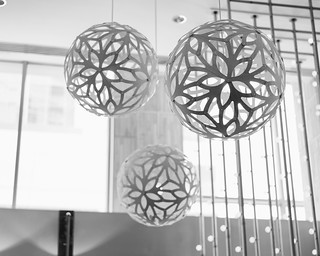
In my previous writing about the NEX 6 and other mirrorless (or EVIL) cameras, I noted how they would probably replace dSLRs for most kinds of photography. Not only are they smaller, lighter, and easier to use, they produce images that are just as good as their dSLR counterparts. Today, unless you're shooting sports, weddings, or other fast-moving action, I think buying a dSLR is a big mistake.
The a7 II is a new camera, and costs a lot more than the NEX 6 models which I purchased in 2012 to replace my Canon 7D. Even the Sony Alpha A6000, a fast-focusing successor to the NEX 6 costs a lot less.
For that extra cost, I think there are a lot of advantages to the a7 II. First, the camera is a lot more competitive with high-end dSLRs in some key areas. It’s startup time and wake time from sleep seems much faster than the NEX 6. The a7 II still starts slower than a DSLR (which can be almost instantaneous), but I think it's now fast enough. If these improvements are in areas you care about, it may be worth the extra cost.
Battery Life
If you read my review of the NEX 6, you may remember that I was critical of the battery life, especially if you used the eyepiece instead of the rear LCD. Both the NEX 6 and a7 II have a similar rating in terms of the number of shots you can take, and they both use the same model of battery.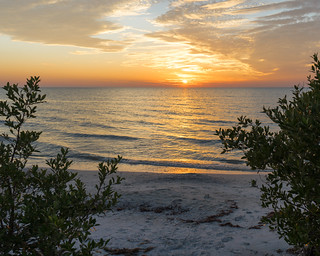
I suspect that you can get more battery life out of the a7 II simply because there is less of a penalty for turning the camera off or letting it sleep (AKA power saver mode). I configured the a7 II to go to power saver mode in ten seconds for exactly this reason. Time will tell if this has a real impact.
The battery life of a DSLR is hard to beat simply because you don't have to light up a screen to use the camera. The electronic viewfinder of these cameras might eat the batteries, but it also makes the camera a lot easier to use. I have a set of fully charged Wasabi batteries that I carry with me just in case I burn through the first battery. Unless I'm visiting a very photogenic spot, one battery usually is enough for a day’s worth of still photography.
Construction
Another area of significant difference between the NEX 6 and the a7 II is the way the cameras are built. The a7 II has a magnesium alloy body that feels quite solid. The a7 II weighs significantly more too. Many of the buttons and switches of the a7 II feel as if they were lathed out of solid hunks of metal. I like the luxurious feel.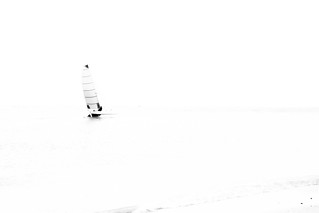
The bottom of the camera is significantly thicker than the NEX 6 as well, which makes the camera larger, but also provides a larger, more stable base for a tripod mount. The bottom is improved in other ways too: the articulating LCD screen is more recessed and protected from this angle. Unlike the NEX 6 design, a tripod mount is unlikely to interfere with the movement of the display.
The NEX 6 isn't advertised as weather proof, yet mine has been in rainstorms around the world and survived just fine. I’m sure to indulge in even more electronics-unfriendly behavior now that I have a a7 II, which is actually advertised as having weather seals.
Another design difference: a large DSLR-like bump contains the electronic viewfinder of the a7 II. The a7 II looks more like a traditional camera, but I liked how the NEX 6 just used a tiny corner of the body without taking up extra space. The a7 II viewfinder also extends further from back from the body of the camera. The extra length probably makes it more comfortable to use, but is another tradeoff because it makes the camera larger.
Usability
The menu system on the a7 II is a vast improvement over the NEX 6. The NEX 6 divided important settings between “Camera” and “Setup” menus that each had long lists of settings. I never knew which menus held which items; both of the screens contained “setup” things for the “camera”. This led to a fun game of “find the setting”, where I would scroll through a huge list of items in one screen, then have to back out and try the other one.The a7 II has a breaks down categories of settings into pages, but almost all of the settings can be paged through linearly without having to tediously back in and out of screens. The whole system seems very responsive compared to the NEX 6, and similarly fast to a dSLR like the Canon 7D.
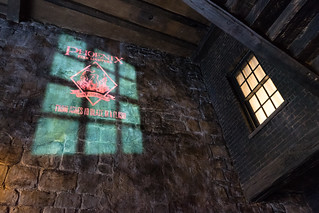
Along those lines, you can customize many of the buttons on the camera to enable you to change different settings quickly. This feels a lot more like my Canon 7D, which is studded with buttons so you can change the important settings without removing the camera from your eye.
The a7 II also has an exposure dial right on the body. I’m not sure if I like that feature or not. On one hand, there is a dedicated dial, on the other hand, it is easy to bump or forget to look at the setting (which is shown in the viewfinder as well, but I sometimes forget to check it). On the bright side, you're much more likely to notice an exposure problem on the a7 II (or NEX 7) than a DSLR because the setting impacts how the scene looks in a viewfinder.
The Canon 7D also has wheels you can configure to change exposure, and it is quite easy to shoot many photos under or over-exposed without realizing it. Obviously the image in optical viewfinder looks the same no matter how poor your exposure is. All of these cameras have a scale in the viewfinder to show the exposure compensation. I tend to forget to look at it, that's all.
Like the intelligent modes in the NEX 6, the a7 II has an auto mode that does a great job of deciding what kind of scene you're shooting and configuring the exposure, ISO, and aperture intelligently. Unless you're going for a very specific effect, this is a great way to shoot travel photography, or any other photography where you may not have a lot of time decide if you'd prefer shallow or deep depth of field, or if a scene is backlit or not.
The a7 II also has a scene mode, which lets you manually choose what type of photos you're taking: sports, landscape, portrait, and so on. This is useful if you're going to take lots of photos of a certain kind, or if you're going to hand the camera to a stranger for a photo.
Full-Frame Sensor
Finally, one of the big selling points of the camera is that the sensor is full-frame. The advantages of full-frame may not be obvious. The NEX 6 camera’s sensor is what they call an APS-C sensor, or a crop sensor. With the same lens, an APS-C sensor takes a photo that looks zoomed in 1.5x compared to a full-frame sensor. That means to get the same photo with the same lens, you'll need to get closer to the subject with the full-frame — making up for the lack of zoom effect. Getting closer to the subject means that you can blur out the background even more with the same aperture.
On the other hand, if you love landscape photography, or you're always at the long end of your zoom range, the full frame might not be as useful to you.
Lenses
When I last wrote about the Sony NEX 6, there weren't many full-frame lenses available for E mount cameras (the E-mount is sometimes called EF-Mount when using full-frame lenses). Although there aren't as many full-frame lenses as the Canon or Nikon system, there are many more choices out than there were just last year. Most of the more important focal lengths are covered.: there are two great lenses for the 28-70mm range, a 16-35mm lens that is getting great reviews.The lenses for EF-Mount don't tend to have as aggressively large apertures as are available for dSLRs. Canon, for instance sells 50mm prime lenses at maximum apertures of f1.8, f1.4, and f1.2. The fastest aperture lens that Sony sells is the Zeiss Sonnar T FE 55m f1.8 lens. I own it, and it makes very sharp images even at the maximum aperture, something that isn't always true.
If you don't mind manual focus (or very slow autofocus), there are adapters for common lenses. I’ve use an adapter for my Canon L Glass on the NEX 6 with lots of success. The focus peaking and zooming makes manual focus much easier than on a dSLR. Many folks are using Leica glass on their Sonys for that reason. If 1.8 isn't fast enough for you, or you need a longer lens than the Sony 70-200mm lens, an adapter will let you use your favorite lens from another brand.
There are advantages to the Sony full-frame lenses too. They are typically smaller and lighter than the dSLR equivalents, and in general they seem to be getting good reviews. I own the Zeiss/Sony Sonnar T FE 55m f1.8 lens. It's quite sharp even wide open, it can blur the background nicely, and really looks and feels like a quality piece of equipment. This is a great lens for taking photos of people (the next photo used this lens, be sure to visit the full size).
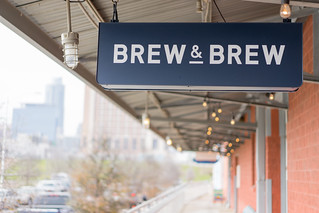
I purchased the a7 II in a kit with the Sony 28-70mm f3.5-5.6 Lens, also available separately. This lens is a great general-purpose zoom, and is reasonably priced, especially compared with the Zeiss/Sony 24-70 f4 lens. Either of these lenses are great for travel and landscape photography. Both have built-in image stabilization which compliments the a7 II's sensor-based stabilization. Both are also weather sealed, to help prevent dust and moisture from harming the electronics.
Image Stabilization
Another reason for the greater thickness of the a7 II is the sensor-based 5-axis optical image stabilization built into the body. This is one of the primary features that made the camera attractive for me. I shoot a lot indoors and at night. The ability to add stabilization to almost any lens makes handheld shooters like me happy. Sony claims that lenses with built-in 2-axis stabilization will get the remaining 3 axes stabilized with the same method.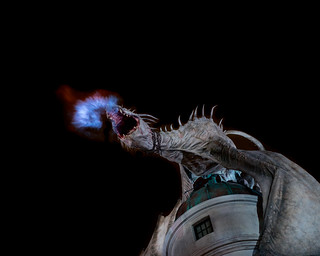
Image Stabilization is useful only when doing handheld photography. It helps with low-light photography, and certain kinds of sports or other action photography where you'll be moving the camera quickly to frame shots (I'm not sure this would otherwise make a good sports/action camera though; others might focus faster). The stabilization might be useful for handheld macro photography too since macro makes movement more apparent.
One thing image stabilization won’t do is reduce blur in a moving subject. For that you need fast shutter speeds.
Social Media Camera
The a7 II makes a fantastic social media camera. Like the NEX 6, the camera can create an ad-hoc Wifi network, and there is a free iPhone and Android “PlayMemories” app that will transfer JPEG versions of photos off the camera (even though I shoot raw on camera this still works). These cameras are my secret trick for making really sharp Instagram posts (the following photo was transferred from my a7 II, edited on my iPad, and posted to Instagram, Twitter, and flickr).
Unlike the NEX 6, there is a dedicated button on the camera. View the photo you want to transfer to your phone or tablet, hit the Fn button, and you can transfer the image in seconds. The a7 II is much faster and more reliable at this than the NEX 6.
I can transfer, edit, and share photos from the a7 II in just a few minutes if everything goes smoothly. I share a lot more photos than I otherwise would because of this feature. I’ve only tested this on my iPhone, but I'm guessing the situation is the same on Android phones.
Conclusions
I'm really enjoying the upgrade to the a7 II. The larger sensor and stabilization make my life easier in the frequent situations where I’m taking photos at night or in dark restaurants. The additional programmable buttons makes it easier to configure the camera on the fly. The faster Wi-Fi sharing means that I share many more photos to social media.If you're even more of a night photographer than I am, and you don’t mind lower resolution (and no in-body stabilization), you might also look into the Sony a7s, which has low noise at astronomically high ISOs (ISO 409,600 vs ISO 25,600 on the a7 II).
If you’re not quite ready for the cost of full-frame camera (and the pricier full-frame lenses), the Sony Alpha A6000 (the successor to the NEX 6) is a fantastic camera that can take photos rivaling a dSLR at a fraction of the size.
Improvements over the NEX 6
- Faster startup time
- Sensor-based 5 axis stabilization for lenses without stabilization; will also enhance the stabilization of sony lenses with built-in stabilization (OSS)
- Similar focus speed
- Many buttons that can be customized
- Same excellent auto mode
- Weather sealing
- Magnesium alloy shell
- Same battery
- Larger, deeper grip
- Easier and faster to navigate settings menus
- Much faster wifi sharing of photos to iOS devices, with dedicated button
- Higher resolution (24.3 megapixels vs. 16.1 megapixels)
- Higher maximum shutter speed of 1/8000 vs 1/4000 S
- Higher flash sync speed of 1/250 S vs 1/160 S
- Similar power consumption: each can take 270 photos using the viewfinder, or 360 using the rear LCD
- Similar ISO range: ISO 100 - 25600 (the a7 II also has extended ISOs below 100 starting at ISO 50)
- Higher maximum ISO in auto mode (ISO 6400 vs 3200)
Disadvantages of the a7 II vs. the NEX 6
- 74% Heavier (599g with battery and media vs. 345g)
- Bulkier
- Full frame lenses are needed to get the most out of the camera, although crop-sensor lenses will work (the crop-sized image will be about 10 megapixels)
- Lower maximum burst capture (10 FPS (frames per second) for the NEX 6 vs 5 FPS, although the NEX 6 will only track focus at 3FPS, while the a7 II will track focus at 5)
- No built-in flash
*Moving Average Inc. is a participant in the Amazon Services LLC Associates Program, an affiliate advertising program designed to provide a means for sites to earn advertising fees by advertising and linking to amazon.com. Buying items through this link helps sustain my outrageous camera addiction and is much appreciated!
